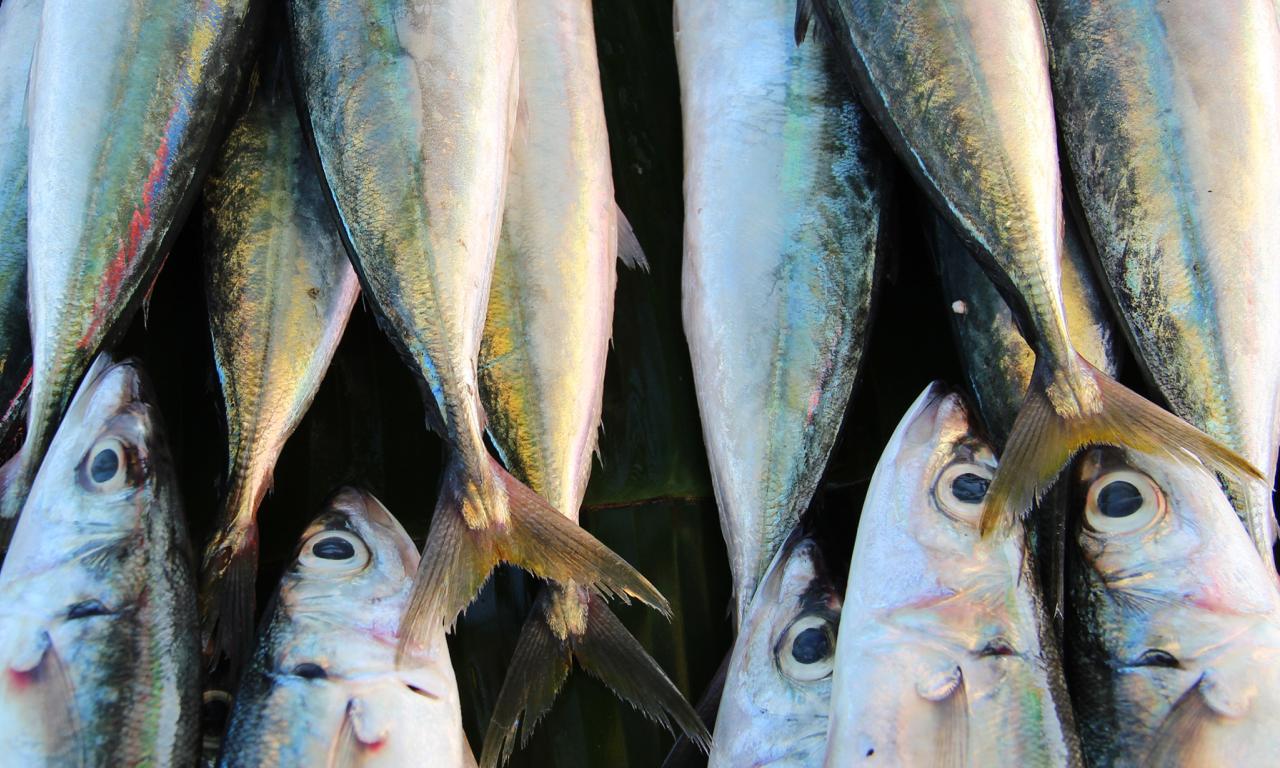
An interview with Eddie Allison, WorldFish Honorary Fellow
Research published recently in Nature showed that, in many developing countries, local fish species are rich in the same micronutrients that are missing from local diets. We spoke with WorldFish Honorary Fellow Eddie Allison, a co-author of the research led by Lancaster University, about the significance of this finding for global food and nutrition security.
Can you briefly tell us about the Harnessing global fisheries to tackle micronutrient deficiencies paper?
The paper shows how different fish in different environments have entirely different nutrient signatures. The fish that are high in omega 3 tend to be in cold temperate waters and open ocean food chains. Such species include herrings, sprats, sardines and anchovies. In contrast, the fish that are high in essential micronutrients like iron and zinc are found in the coastal, bottom feeding areas of the tropics.
Our aim was to highlight that there’s a major pool of nutrients swimming around in the sea. It's being caught but the nutrients are not getting to the undernourished. If they could, it's a large enough pool to make a massive difference to global malnutrition. It's not the end of the story but it's a pretty impressive starting point.
Why are the paper’s findings significant?
Firstly, this is the first time that anyone has, convincingly, estimated the total essential micronutrient contribution that the world's fish catchers make. And that in itself—the sheer quantity of micronutrients relative to the micronutrient needs of the human population—is already a big finding.
Secondly, the study shows that the micronutrient supply in the world's existing fish catch from marine capture fisheries—overfished as it may be in some places—would be enough to address all the micronutrient deficiencies that you see in the world's coastal zones.
Thirdly, till now, a lot of research and investment has been focused on improving the nutrient content of people’s diets through agricultural improvements; for example, through crop diversification, nutrient supplementation and bio fortification of cereal crops. Fish have been left out of that picture because they’re underwater and invisible. This Nature research brings fish back onto the center of the plate of nutrition policy.
What’s one of the big scientific contributions of this paper?
We found that the best way to get zinc back to people is, literally, to go fishing. In tropical areas, many people struggle to get enough zinc and iron from their land-grown crops because the soils are notoriously zinc and, often, iron deficient. Yet there's a huge pool of these nutrients in the sea. That’s because much of the zinc that used to be in the soil, which is lost through our agricultural practices and natural erosion, has ended up in the sediments. It enters the marine food chain and ends up in fish. But fishing for zinc is very different to fishing for dollars, which is what we do at the moment.
The paper shows that policy change is needed to harness the health benefits of fish. What’s the greatest barrier in realizing this?
The difficult part is how do you change the current fishery governance and trade system? Generally speaking, the world's fishery marketing systems are transitioning to a system where fish is becoming a luxury good. And our fishery management systems are geared toward catching sustainable quantities of larger, more valuable fish to send to wealthier consumers and urban centers. That's because those are the places you can add the most value to the fish catch. If your goal is to generate profit from a sector, then that's what you would do. It's perfectly rational.
But if you think of fish as part of the food system, and not just part of the trade system, then you start to think about where it could have the greatest health impact. And that's not in the sushi bars of London and New York. It's in the coastal areas of sub-Saharan African countries that traditionally depend on fish. It's in Small Island Developing States where fish is a major part of people's diets. It's in the low-lying coastal areas of South and Southeast Asia.
Can a system focused on getting lower-value, nutrient-dense fish to poorer people coexist with the current fisheries system?
Yes, but it needs to be supported and recognized. And there need to be changes in how we manage fisheries and invest in and support different kinds of trade networks to make that happen. It's not very clear how you would do that because it’s different in every country, depending on things like the market orientation, the kind of government and how functional your governance is. So that's the hard work that comes after this study.
Importantly, society needs to change its emphasis on what it is managing fisheries for. Is it for money and its contribution to the global economy, or for its contribution to global health? There's some compatibility between the two but it's not total. All that we, the research authors, are asking is to consider shifting the policy agenda toward nutrition-sensitive fisheries.
Related publications:
• Harnessing global fisheries to tackle micronutrient deficiencies